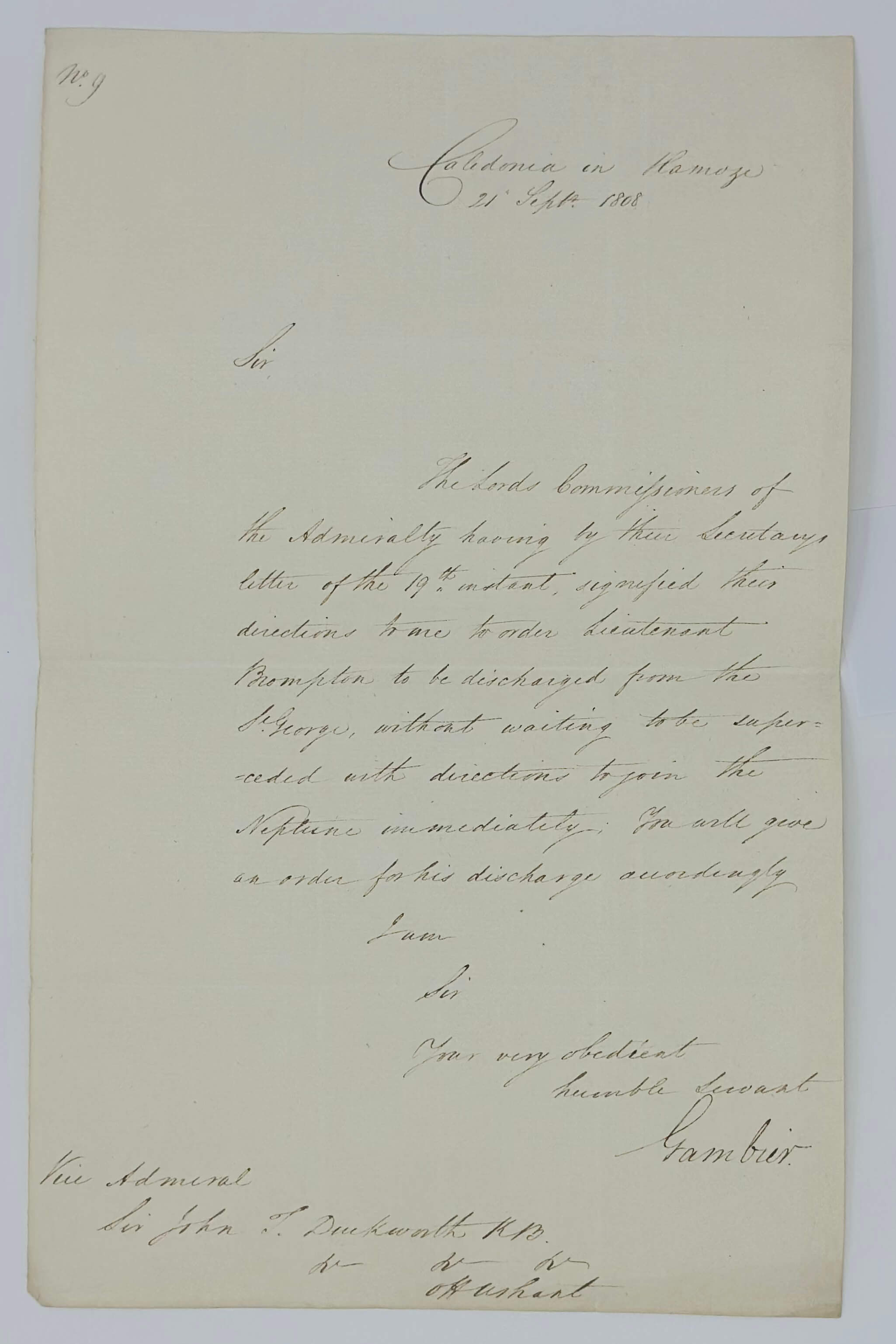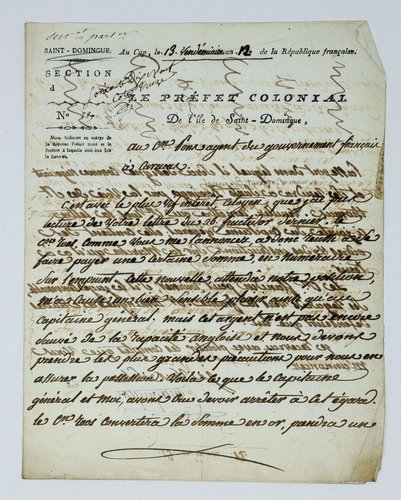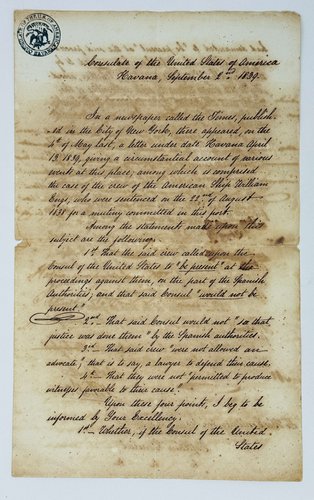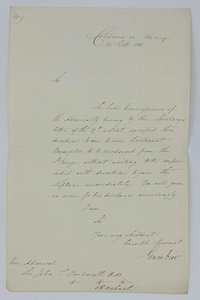
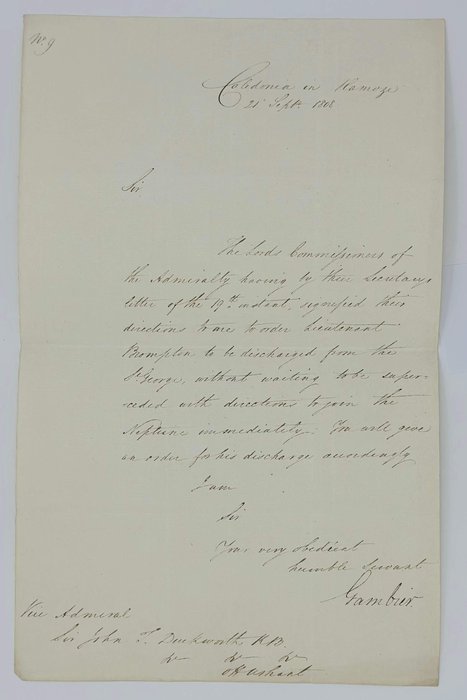
#MB71
1808
Folio (ca. 31,5x20 cm). 2 pp. Brown ink on Whatman laid paper watermarked ‘1806’; numbered and docketed in secretarial hand on verso. Written in secretarial hand and signed by Gambier. A fine letter.
This official letter was signed by Admiral of the Fleet James Gambier, when he was the commander of the Channel Fleet of the Royal Navy (1808-1811), and addressed to Admiral Sir John Thomas Duckworth (1747–1817), then the second in command of the Mediterranean Fleet. The letter concerns the transfer of one of Gambier’s officers from his flagship HSM Royal George (1788) to HSM Neptune (1797), a 98-gun second rate ship of the line. She was just about to embark to the West Indies where she would become the flagship of the British invasion to the French colony of Martinique in January 1809 under command of Rear-Admiral Alexander Cochrane. Gambier wrote the letter on board HMS Caledonia (1808), a 120-gun first-rate ship of the line, which had been launched earlier that year at Plymouth.
Sir James Gambier also was the Governor of Newfoundland (1802-1804), and a Lord of the Admiralty. He participated in the American War of Independence, gained the distinction in the Glorious First of June in 1794, and commanded the naval forces in the campaign against Copenhagen (1807) and in the Battle of the Basque Roads (1809). Gambier was a founding benefactor of Kenyon College in the United States, so the town that was founded with it, Gambier, Ohio is named after him. Mount Gambier, South Australia, the extinct volcano and the later city, and the Gambier Island in British Columbia are also named after him (Wikipedia).
Sir John Thomas Duckworth “served during the American War of Independence, the French Revolutionary and Napoleonic Wars, as the Governor of Newfoundland during the War of 1812, and a member of the British House of Commons during his semi-retirement. Serving with most of the great names of the Royal Navy during the later 18th and early 19th centuries, he fought almost all of Britain's enemies on the seas at one time or another, including a Dardanelles operation that would be remembered a century later during the First World War. He commanded at the Battle of San Domingo, the last great fleet action of the Napoleonic Wars” (Wikipedia).

